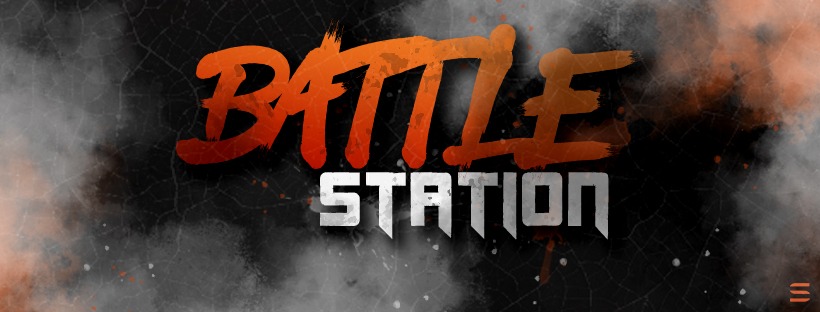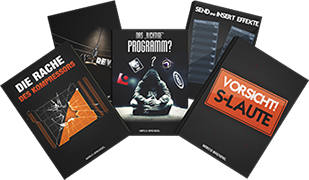"Old-fashioned Chinese tea units have a record that spans around a millennium, directly connected with the progress of Chinese tea culture itself. Tea was developed and taken through the Tang Dynasty (618-907 AD), and it absolutely was in this period that the utilization of tea models became widespread. The earliest tea models were simple, created from resources like earthenware, and were used mostly for making free tea leaves. As tea drinking evolved right into a sophisticated social training, the style and components of tea sets also advanced. The Song Empire (960-1279 AD) saw the emergence of particular tea sets made from pottery, noted for their delicate quality and aesthetic appeal. These porcelain tea units were often designed with elaborate styles, reflecting the creative sensibilities of the time. The Ming Dynasty (1368-1644 AD) more revolutionized tea lifestyle with the release of loose-leaf tea, leading to the development of the teapot as a main part of the tea set. The Yixing teapot, created from a distinctive clay present in the Jiangsu province, became particularly popular and stays a symbol of conventional Asian tea models to the day.
The development of standard Chinese tea models is a very qualified craft that has been passed down through generations. Artisans who focus in making these tea units usually start their training at a early age, learning the complex methods needed to make supreme quality pieces. The procedure starts with the choice of materials, that may range from pottery and clay to more precious substances like jade or silver. The choice of material is crucial, because it influences not merely the looks of the tea set but in addition their functionality. Like, Yixing clay teapots are noted for their ability to keep temperature and enhance the flavor of tea with time, creating them highly prized among tea connoisseurs. When the product is opted for, the artisan shapes each piece by hand, often applying old-fashioned methods and methods which have remained unaffected for centuries. The outer lining of the tea set is then cautiously decorated, occasionally with sophisticated motifs that reveal Chinese symbolism and philosophy. Ultimately, the tea set is shot in a kiln, a procedure that will require specific control of heat and timing to accomplish the specified finish. The effect is just a tea collection that is not only a useful item but in addition a work of art, embodying the social and visual prices of Chinese civilization.
Old-fashioned Asian tea models play a main position in tea ceremonies, which are ritualized events where tea is prepared and consumed in a way that highlights mindfulness, respect, and harmony. The Gongfu tea ceremony, one of the most well-known types, started in the Fujian and Guangdong provinces and requires the usage of a particular tea collection that features a small teapot, a tea dish, and tiny teacups. The ceremony was created to bring out the most effective types in the tea, with each stage carefully choreographed to improve the sensory experience. The teapot is employed to produce the tea, which will be then poured right into a fairness glass to make certain an even distribution of flavor. The tea is finally offered in little, fine servings that inspire gradual sampling and gratitude of the tea's aroma and taste. The style and material of the tea set are vital to the ceremony, because they affect the temperature, odor, and flavor of the tea. For instance, a Yixing clay teapot, having its porous floor, may absorb the quality of the tea as time passes, increasing the flavor with each use. The tea ceremony is not just about drinking tea; it is really a spiritual practice that promotes inner peace, representation, and a strong link with nature.
The style of conventional Asian tea sets is rich with symbolism, sending the deep social and philosophical roots of tea consuming in China. Each element of the tea set, from the shape of the teapot to the styles on the servings, is imbued with meaning. Common motifs include dragons, phoenixes, and lotuses, which are designs of energy, harmony, and love, respectively. The circular model of the teapot and servings usually shows unity and completeness, crucial concepts in Asian philosophy. The option of shade is also substantial; like, natural is connected with wellness and vigor, while blue and bright porcelain is usually associated with beauty and refinement. The utilization of natural aspects, such as for instance bamboo or plum flowers, in the design of tea units shows the Asian gratitude for character and the opinion in residing in equilibrium with the organic world. The intricate styles on traditional tea models are not just ornamental but offer as an indication of the prices and axioms that information Asian culture. Each tea collection is, thus, a microcosm of Asian artwork and idea, giving understanding into the spiritual and social living of individuals who use it.
The components used in old-fashioned Chinese tea sets are carefully plumped for for their aesthetic characteristics and functional properties. Porcelain, a type of porcelain made from kaolin clay, is possibly the many famous substance utilized in Chinese tea sets. It's valued for its translucency, energy, and capability to retain temperature, making it well suited for preparing and helping tea. The most beautiful porcelain tea models come from Jingdezhen, usually known as the ""Pottery Capital"" of China. Yixing clay, still another popular product, is employed to really make the famous Yixing teapots. That clay is exclusive in that it's unglazed, allowing it to digest the tastes of the tea and improve the taste with each use. Yixing teapots are especially favored for making oolong and pu-erh teas, while they draw out the complex flavors of those teas. As well as pottery and clay, conventional Chinese tea units can be produced from materials like jade, glass, and silver. Each material has its own traits that effect the tea-drinking knowledge, from how a tea is made to the way in which it's served and enjoyed.
Traditional Chinese tea pieces have had a lasting effect on modern style, both in China and around the world. The ease and style of those tea units have influenced modern manufacturers to include aspects of standard Asian aesthetics into their work. Modern tea units often function clear lines, smart types, and a focus on normal products, every one of which is often traced back once again to the maxims of conventional Asian craftsmanship. The increased exposure of equilibrium and balance, that is main to the style of conventional tea units, can also be reflected in modern tea ware. Moreover, the use of standard Asian motifs, such as for example dragons, bamboo, and lotus plants, remains common in modern design, serving as a url between the past and the present. Recently, there has been a replaced curiosity about old-fashioned Chinese tea tradition, ultimately causing a resurrection of basic tea set designs. This has not just preserved the history of old-fashioned Asian tea units but has additionally introduced them to a fresh technology of tea customers who appreciate their elegance and national significance.
Traditional Chinese tea models have played an important position in the social and social life of China for centuries. Tea drinking is a public task that provides persons together, whether in a proper tea ceremony or an everyday gathering with buddies and family. The tea collection utilized in these situations is more than a vessel for helping tea; it is just a mark of hospitality, regard, and cultural harmony. In Asian culture, providing tea to guests is really a gesture of goodwill and a way to foster relationships. The decision of tea set is usually a representation of the host's personality, status, and social values. Along with their social position, conventional Chinese tea models also maintain a devote social practices such as for instance weddings, where they are found in the tea ceremony to symbolize the union of two families. The trade of tea through the ceremony presents regard and passion, and the tea set used becomes a cherished antique handed down through generations. In this manner, old-fashioned Asian tea models are deeply embedded in the material of Chinese society, holding with them the methods and traditions of a rich ethnic heritage.
Lately, conventional Chinese tea units have obtained world wide recognition and understanding, transcending national boundaries to become appreciated by tea fans round the world. The international tea tradition has embraced the appearance and quality of Chinese tea models, with lovers and connoisseurs seeking out reliable pieces from China. The popularity of tea ceremonies, particularly the Gongfu tea ceremony, in addition has led to the international curiosity about traditional Chinese tea sets. Many folks are attracted to the mindfulness and ritualistic areas of these ceremonies, obtaining inside them ways to decrease and relate to the present moment. The wonder and style of Asian tea models have also produced them popular as ornamental things, with several choosing to show them inside their houses as a testament to their appreciation of Asian culture. As a result, traditional Chinese tea models are becoming a connection between East and West, bringing people together via a shared love of tea and the cultural practices that encompass it. That worldwide understanding not merely preserves the history of standard Chinese tea sets but additionally ensures that their ethnic significance remains acknowledged and celebrated around the world."
The Role of Traditional Chinese Tea Sets in Chinese Hospitality
-
vahamo3719
- VIP Member

- Beiträge: 126704
- Registriert: 19.11.2022, 16:01
Kostenloses Ebook im Battle-Station Newsletter! Der BS newsletter verschickt nicht nur News sondern direkt mein 9,99€ Buch als PDF gratis dazu. Dort geht es um Mixing und Mastering. Ich versende auch kostenfrei Recording, Mixing und Mastering-Tipps. melde dich jetzt gratis an und erhalte noch heute einen Gutschein für den neuen Premium-Bereich als Geschenk! Jetzt klicken
-
vahamo3719
- VIP Member

- Beiträge: 126704
- Registriert: 19.11.2022, 16:01
Re: The Role of Traditional Chinese Tea Sets in Chinese Hospitality
Prior to you decide to create your own checklist to include an idea associated with what camping checklist ought to. Really … A listing can be more than what you need. gongfu tea set
Wer ist online?
Mitglieder in diesem Forum: vahamo3719 und 20 Gäste

